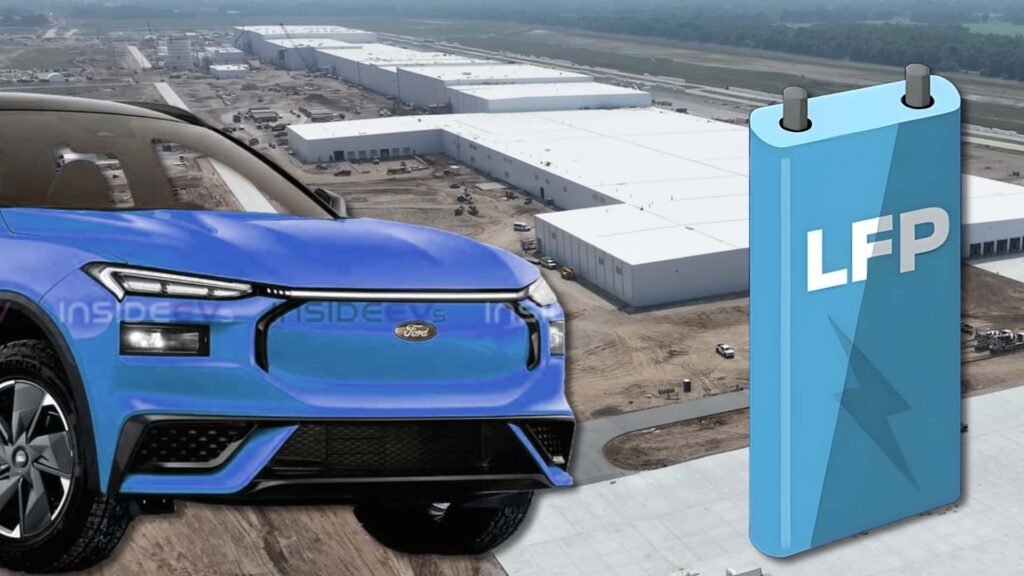
MARSHALL, MICHIGAN – Ford Motor Company’s latest venture into electric vehicle (EV) batteries is both a homecoming and a strategic leap forward. The automaker has embarked on a $3 billion construction project, known as the BlueOval Battery Park Michigan, set to become the first U.S. factory owned by an automaker to produce lithium-iron phosphate (LFP) battery cells.
Immediate Impact: A New Era for Ford
The facility, located just 90 minutes from Detroit, marks Ford’s attempt to reclaim a technology space currently dominated by Chinese companies. LFP batteries, essential for affordable EVs, are at the heart of this initiative, according to Lisa Drake, Ford’s Vice President of Technology Platform Programs and EV Systems.
“This is an opportunity for Ford to lead in this space and bring the technology back to the U.S.,” Drake stated.
Key Details Emerge: Ford’s Strategic Move
Construction on the 2 million square-foot plant is well underway. Once operational, it is expected to create approximately 1,700 manufacturing jobs. The plant aims for an energy output of about 20 gigawatt-hours per year, enough to power around 250,000 vehicles.
However, the project has not been without its challenges. LFP technology, originally developed in the U.S., was commercialized and patented by Chinese companies. To produce LFP batteries domestically, Ford must license the technology from China’s CATL, a move that has sparked political debate.
Industry Response: Navigating Controversy
Ford’s licensing agreement with CATL has drawn criticism from U.S. lawmakers, concerned about Chinese influence. Despite this, Ford maintains that the factory is “Ford-owned and Ford-operated,” with the licensing deal being a necessary legal step.
“We don’t misappropriate [intellectual property] at Ford,” Drake emphasized. “It’s just a means to get that back.”
By the Numbers: Ford’s Ambitious Targets
- Factory Size: 2 million square feet
- Job Creation: Approximately 1,700 positions
- Energy Output: 20 gigawatt-hours per year
- Vehicle Capacity: Enough for around 250,000 cars
What Comes Next: The Road Ahead for Ford
Ford is also competing with General Motors to develop lithium-manganese-rich (LMR) batteries, aiming for deployment by the end of the decade. The automaker is diversifying its battery chemistries, including nickel-manganese-cobalt (NCM) batteries, to cater to different vehicle needs.
Drake highlighted the importance of LFP batteries for affordable EVs, stating that the partnership with CATL could expedite Ford’s plans. “We’ll use all three [battery chemistries] because we have a full-line EV plan,” she said.
Background Context: A Global Shift
The global dominance of Chinese companies in LFP technology has been a point of contention. Ford’s move represents a significant shift towards re-shoring technology and reducing dependency on foreign supply chains.
“You can build LFP without Chinese critical minerals,” Drake asserted. “It’s very, very difficult to do, but our supply chain team at Ford went and did it.”
Regional Implications: Political and Economic Stakes
Ford’s project has faced political headwinds, with potential impacts on job creation and economic growth in Michigan. The plant was initially planned for Virginia but was relocated due to concerns over Chinese involvement.
Despite the controversy, Ford is committed to advancing its EV strategy and supporting U.S. manufacturing. The company’s “skunkworks” program aims to produce low-cost EVs to compete globally, potentially boosting EV adoption and demand.
As Ford navigates these challenges, the success of the BlueOval Battery Park Michigan could redefine the landscape of American automotive manufacturing and set a precedent for future developments in the EV sector.







